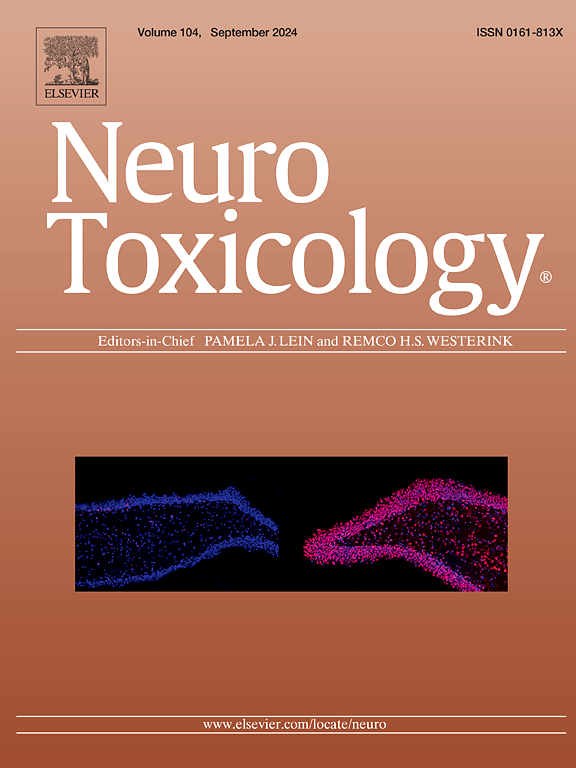The see-saw effect of neuroactive steroids and endocrine disrupting compounds on maternal mental health status
IF 3.9
3区 医学
Q2 NEUROSCIENCES
引用次数: 0
Abstract
Background
Antepartum depression, a non-psychotic mood disturbance occurring during pregnancy, is influenced by hormonal fluctuations and environmental endocrine disruptors. Despite its association with adverse postpartum outcomes, it has been studied to a limited extent. Hence, this study aims to investigate the association of neuroactive steroids, endocrine-disrupting compounds, and nutritional status of pregnant women with the manifestations of antepartum depressive symptoms.
Materials and methods
This cross-sectional study assessed 400 pregnant women in their third trimester for depressive symptoms using the Edinburgh Postnatal Depression Scale (EPDS) and evaluated for severity using the Beck Depression Inventory-II. The concentrations of allopregnanolone, DHEA-S, bisphenol A, methyl paraben, estradiol, progesterone, oxytocin, vitamin B12, folic acid, vitamin D, iron, magnesium and zinc were analysed. Statistical analysis included Mann Whitney U test, Chi-square test, Spearman Correlation, and Logistic regression.
Results
The prevalence of antepartum depressive symptoms was 23 %. Allopregnanolone, DHEA-S, bisphenol A, methyl paraben, estradiol, oxytocin, and TSH levels were associated with depressive symptoms. Reduced levels of allopregnanolone, DHEA-S, and estradiol, along with elevated bisphenol A levels, were identified as significant independent risk factors for antepartum depressive symptoms. Selective micronutrient deficiency was also noted. Risk cutoff for antepartum depressive symptoms was established for allopregnanolone (≤17.9 ng/ml), DHEA-S (≤0.20 µg/ml), bisphenol A (≥2027.1 pg/ml), and methyl paraben (≥1.15 µg/ml).
Conclusion
Our study on 400 antepartum women showed a 23 % prevalence of depressive symptoms, with significant association reported with reduced neuroactive steroids, elevated endocrine disruptors, lower reproductive hormones, and micronutrient deficiency. These findings emphasize the need for comprehensive screening, monitored nutritional supplementation, and hormonal assessments in effectively managing pregnancy-related depressive symptoms.
神经活性类固醇和内分泌干扰化合物对产妇心理健康状况的拉锯式影响
背景产后抑郁是一种发生在孕期的非精神病性情绪障碍,受激素波动和环境内分泌干扰物的影响。尽管它与不良的产后结局有关,但它的研究范围有限。因此,本研究旨在探讨神经活性类固醇、内分泌干扰化合物和孕妇营养状况与产前抑郁症状表现的关系。材料和方法本横断面研究使用爱丁堡产后抑郁量表(EPDS)评估了400名妊娠晚期孕妇的抑郁症状,并使用贝克抑郁量表- ii评估其严重程度。分析了异孕酮、DHEA-S、双酚A、对羟基苯甲酸甲酯、雌二醇、孕酮、催产素、维生素B12、叶酸、维生素D、铁、镁和锌的浓度。统计分析包括Mann Whitney U检验、卡方检验、Spearman相关和Logistic回归。结果产前抑郁症状患病率为23% %。异孕酮、DHEA-S、双酚A、对羟基苯甲酸甲酯、雌二醇、催产素和TSH水平与抑郁症状相关。异孕酮、DHEA-S和雌二醇水平降低以及双酚A水平升高被确定为产前抑郁症状的重要独立危险因素。还注意到选择性微量营养素缺乏。确定异孕酮(≤17.9 ng/ml)、DHEA-S(≤0.20 µg/ml)、双酚A(≥2027.1 pg/ml)和对羟基苯甲酸甲酯(≥1.15 µg/ml)为产前抑郁症状的风险截止点。结论:我们对400名产前妇女的研究显示,抑郁症状的患病率为23% %,与神经活性类固醇降低、内分泌干扰物升高、生殖激素降低和微量营养素缺乏有显著关联。这些发现强调了全面筛查、监测营养补充和激素评估在有效管理妊娠相关抑郁症状中的必要性。
本文章由计算机程序翻译,如有差异,请以英文原文为准。
求助全文
约1分钟内获得全文
求助全文
来源期刊

Neurotoxicology
医学-毒理学
CiteScore
6.80
自引率
5.90%
发文量
161
审稿时长
70 days
期刊介绍:
NeuroToxicology specializes in publishing the best peer-reviewed original research papers dealing with the effects of toxic substances on the nervous system of humans and experimental animals of all ages. The Journal emphasizes papers dealing with the neurotoxic effects of environmentally significant chemical hazards, manufactured drugs and naturally occurring compounds.
 求助内容:
求助内容: 应助结果提醒方式:
应助结果提醒方式:


